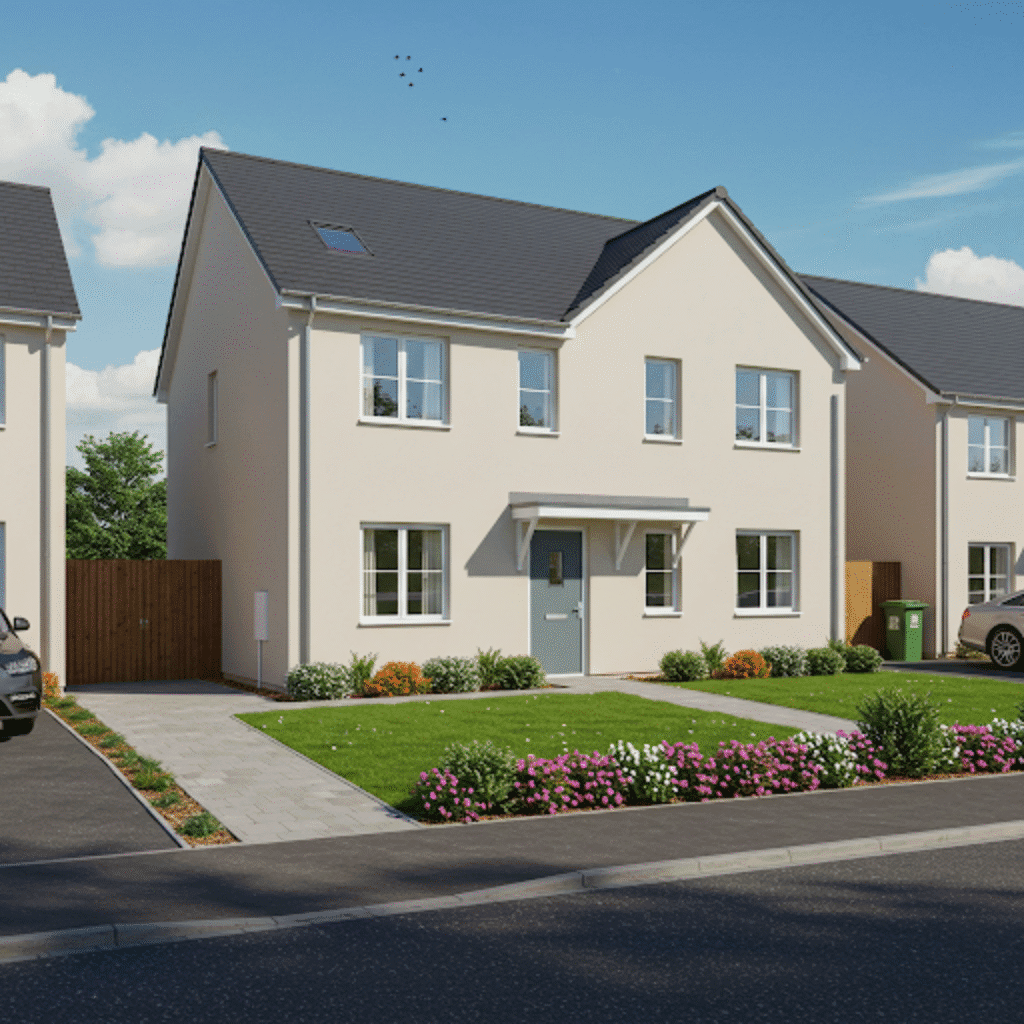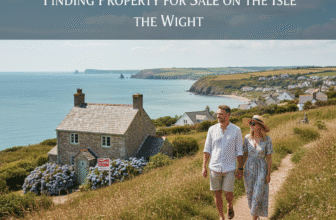
Finding Your Dream Home: A Comprehensive Guide to Houses for Sale in Devon
Devon. The very name conjures images of rolling green hills meeting dramatic coastlines, cream teas savoured in picturesque villages, and bracing walks across wild moorland. It’s a county that captures the imagination, offering a lifestyle coveted by many across the UK and beyond. If you’re dreaming of swapping city bustle for coastal calm or seeking a rural idyll, exploring houses for sale in Devon could be the first step towards making that dream a reality. But where do you start in a county so diverse and full of possibilities?
This guide aims to navigate the vibrant Devon property market, highlighting the unique character of its different regions, the types of homes you might find, and practical advice for your search. Whether you envision a thatched cottage nestled in a quiet lane, a sleek apartment overlooking a bustling harbour, or a family home with room to roam, Devon likely has something to suit your aspirations.
Why Choose Devon? The Enduring Appeal
What makes Devon such a perennially popular place to live? The reasons are as varied as its landscape.
- Unrivalled Natural Beauty: Devon boasts two stunning coastlines – the rugged cliffs and surf beaches of North Devon and the gentler bays and estuaries of the South Devon coast. Inland, you’ll find the wild expanse of Dartmoor National Park, the rolling hills of the South Hams, and lush river valleys. This natural playground offers endless opportunities for outdoor pursuits, from surfing and sailing to hiking and cycling.

- Quality of Life: Many move to Devon seeking a slower pace of life, cleaner air, and a stronger sense of community. While vibrant cities like Exeter and Plymouth offer urban amenities, much of the county retains a charming, traditional feel. Lower crime rates compared to many metropolitan areas also add to the appeal.
- Diverse Towns and Villages: From historic market towns like Totnes and Tavistock to charming fishing villages like Clovelly and Beer, Devon offers a wide array of places to call home. Each has its own unique character, community spirit, and local amenities.
- Connectivity: While feeling wonderfully remote in parts, Devon isn’t cut off. The M5 motorway provides access from the north, Exeter boasts an international airport, and mainline train services connect major towns to London and other parts of the UK.
- Foodie Heaven: Devon is renowned for its local produce, from fresh seafood and farm-reared meats to delicious cheeses and, of course, clotted cream. Farmers’ markets, excellent pubs, and acclaimed restaurants abound.
Exploring Devon’s Diverse Property Landscape: Where to Look?
Devon is a large county, and the property market varies significantly from one area to another. Understanding the different regions is key to focusing your search.
North Devon: Wild Coasts and Rolling Hills
Known for its dramatic coastline, golden sandy beaches like Woolacombe, Croyde, and Saunton Sands (a surfer’s paradise), and rugged Exmoor National Park bordering Somerset. North Devon offers a more remote feel in places.
- Barnstaple: The main commercial hub, offering a range of amenities, good transport links, and a mix of property types, from Victorian terraces to modern estates.
- Bideford: A historic port town on the River Torridge with a pannier market and attractive quayside. Properties range from period homes to newer developments.
- Coastal Villages: Places like Instow, Appledore, and Braunton are highly sought-after for their coastal lifestyle, attracting premium prices. Expect charming cottages and contemporary homes with sea views.
- Inland: Towns like South Molton and Great Torrington offer more affordable options and access to the beautiful countryside.
South Devon & The South Hams: Estuaries, Beaches, and Gentle Countryside
Often considered the ‘jewel in Devon’s crown’, the South Hams is an Area of Outstanding Natural Beauty characterised by picturesque estuaries (Dart, Salcombe, Avon, Yealm), sheltered coves, beautiful beaches, and rolling farmland. Property here commands some of the highest prices in the county.
- Salcombe: A prestigious sailing haven with stunning estuary views. Expect high property values, particularly for waterfront homes and holiday lets.
- Dartmouth: Another beautiful estuary town, home to the Britannia Royal Naval College, with a rich maritime history and attractive period properties lining its steep streets.
- Totnes: A unique and vibrant market town known for its independent spirit, alternative vibe, and historic architecture. Offers a mix of riverside properties, townhouses, and surrounding rural homes.
- Kingsbridge: A bustling market town serving the wider South Hams, offering good amenities and a range of housing options.
- Coastal Villages: Gems like Bigbury-on-Sea, Thurlestone, and Hope Cove are incredibly popular, offering idyllic coastal living.
Exeter and East Devon: City Life and Jurassic Coast
This area combines the amenities of Devon’s capital city with the beauty of the East Devon Area of Outstanding Natural Beauty and the dramatic Jurassic Coast World Heritage Site.
- Exeter: A thriving historic city with a magnificent cathedral, Roman roots, a Russell Group university, excellent shopping, and strong transport links. The property market is buoyant, with popular areas like St Leonard’s, Topsham (a charming estuary town on the city’s edge), and Heavitree offering diverse housing stock, from period homes to modern apartments.
- East Devon Towns: Sidmouth, Budleigh Salterton, and Seaton are elegant seaside towns known for their Regency architecture and stunning coastal paths along the Jurassic Coast. They are popular retirement destinations but also attract families.
- Market Towns: Honiton (famous for lace and antiques) and Ottery St Mary offer attractive housing and a strong sense of community slightly further inland.
West Devon and Dartmoor: Moorland Vistas and Market Towns
Dominated by the rugged beauty of Dartmoor National Park, this area offers dramatic landscapes, granite tors, and wide-open spaces. It appeals to those seeking tranquility and outdoor adventure.
- Tavistock: A charming stannary town on the edge of Dartmoor, known for its pannier market, independent shops, and handsome architecture. Offers a gateway to the moor and the Tamar Valley.
- Okehampton: Another key town providing access to the northern part of Dartmoor, with good transport links via the A30. Property here is generally more affordable than in coastal areas.
- Dartmoor Villages: Places like Chagford, Widecombe-in-the-Moor, and Princetown offer unique moorland living, often featuring traditional granite cottages. Be prepared for potentially challenging weather and limited amenities in the most remote spots.
Torbay (The English Riviera): Seaside Resorts
Comprising Torquay, Paignton, and Brixham, Torbay offers a distinct seaside resort feel with palm trees, harbours, and sandy beaches. Each town has its own character.
- Torquay: The largest town, known for its marina, international conference centre, and vibrant nightlife. Offers a wide range of properties, from grand Victorian villas to modern apartments.
- Paignton: A popular family resort with a long sandy beach, pier, and zoo. Offers a mix of housing, often more affordable than Torquay.
- Brixham: A working fishing port with a picturesque harbour surrounded by colourful cottages built into the hillside. Retains a strong maritime character.
Types of Properties You’ll Find in Devon
Devon’s rich history and diverse geography mean you’ll encounter a wide array of property styles:
- Thatched Cottages: The quintessential chocolate-box image, found particularly in rural villages across the county. Often Grade II listed, requiring specialist maintenance.
- Farmhouses and Barn Conversions: Reflecting Devon’s agricultural heritage, these offer character, space, and often come with land. Barn conversions blend traditional features with modern living.
- Georgian and Victorian Townhouses: Found in historic towns like Exeter, Tavistock, and Sidmouth, offering elegant proportions and period features.
- Coastal Properties: Ranging from fishermen’s cottages in harbourside villages to modern architectural statements with panoramic sea views. Location dictates a significant premium.
- New Builds: Found in developments on the edges of towns and cities, offering contemporary design, energy efficiency, and builder guarantees.
- Bungalows: Popular across the county, particularly in coastal towns favoured by retirees.
- Moorland Homes: Often built from local granite, these properties offer seclusion and direct access to Dartmoor’s unique environment.
Navigating the Devon Property Market: Tips for Buyers
Buying a house in Devon, like anywhere in the UK, requires careful planning and research.
- Define Your Priorities: Be clear about your must-haves and nice-to-haves. Consider location (coast, country, town?), property type, size, budget, proximity to schools, transport links, and local amenities.
- Understand Market Values: Prices vary hugely across Devon. Research recent sold prices in your target areas using online property portals. Be realistic about what your budget can achieve. Areas like Salcombe, Croyde, and Topsham command significant premiums.
- Get Your Finances in Order: Obtain a mortgage Agreement in Principle (AIP) early on. This shows sellers and estate agents you are a serious buyer and clarifies your borrowing potential. Factor in Stamp Duty Land Tax (SDLT), solicitor fees, survey costs, and removal expenses.
- Register with Local Estate Agents: While online portals are essential, registering directly with agents active in your desired areas ensures you hear about properties as soon as, or even before, they hit the wider market. Build relationships with them.
- Be Prepared for Competition: Desirable properties in popular locations often attract multiple buyers and can sell quickly, sometimes going to ‘best and final offers’. Be ready to act decisively when you find the right place.
- Viewings are Crucial: Photographs can be deceiving. Visit properties in person, ideally at different times of the day. Explore the surrounding neighbourhood, check local amenities, and assess noise levels and parking.
- Consider a Survey: Especially for older or unconventional properties (like thatched or cob cottages), a detailed building survey (RICS Level 2 or Level 3) is highly recommended to uncover potential issues.
- The Buying Process: Once your offer is accepted, you’ll instruct a solicitor or conveyancer to handle the legal work, including searches, contract exchange, and completion. This process typically takes several months.
Lifestyle Considerations: Beyond Bricks and Mortar
Think about the practicalities of living in your chosen area:
- Commuting: If you need to commute for work, research travel times and transport options (road networks like the M5, A38, A30; train lines; bus services). Rural locations can mean longer journeys.
- Broadband: Internet connectivity can vary, especially in more remote rural or moorland areas. Check availability and speeds if working from home is essential. Fibre rollout is improving but isn’t universal.
- Schools: If you have children, research local primary and secondary schools, including their Ofsted ratings and catchment areas.
- Amenities: How close are shops, supermarkets, doctors’ surgeries, pubs, and restaurants? Rural living might mean a drive to access everyday facilities.
- Community: Visit local pubs, cafes, or community events to get a feel for the area. Does it have the atmosphere you’re looking for?
Potential Challenges and How to Overcome Them
While idyllic, buying in Devon isn’t without potential hurdles:
- Affordability: Devon’s popularity, particularly in coastal and prime rural spots, means prices can be high compared to average local wages. Explore slightly less fashionable towns or villages for better value.
- Second Homes/Holiday Lets: The prevalence of second homes and holiday lets in some coastal areas can impact community feel year-round and contribute to higher prices.
- Property Condition: Older properties, especially listed buildings or those built with traditional materials (cob, thatch), may require significant upkeep and specialist knowledge. Factor maintenance costs into your budget.
- Infrastructure Strain: In some popular tourist areas, roads and services can feel stretched during peak season.
- Hidden Costs: Be aware of potential extra costs, such as maintaining private drainage systems (septic tanks) common in rural properties or specific insurance requirements for thatched roofs or flood-risk areas.
Making Your Move to Devon: Settling In
Once you’ve secured your Devon home, the adventure truly begins. Embrace the local culture, explore the stunning surroundings, join local clubs or groups, and savour the unique pace of life. Whether it’s learning to surf on the north coast, hiking the tors of Dartmoor, sailing the southern estuaries, or simply enjoying a pint in a centuries-old pub, Devon offers a rich and rewarding lifestyle.
Finding a house for sale in Devon is about more than just buying property; it’s about investing in a way of life. With its breathtaking scenery, diverse communities, and endless opportunities for adventure and relaxation, it’s no wonder so many people are drawn to England’s glorious south-west corner. Start your search today, and you could soon be calling this beautiful county home.







